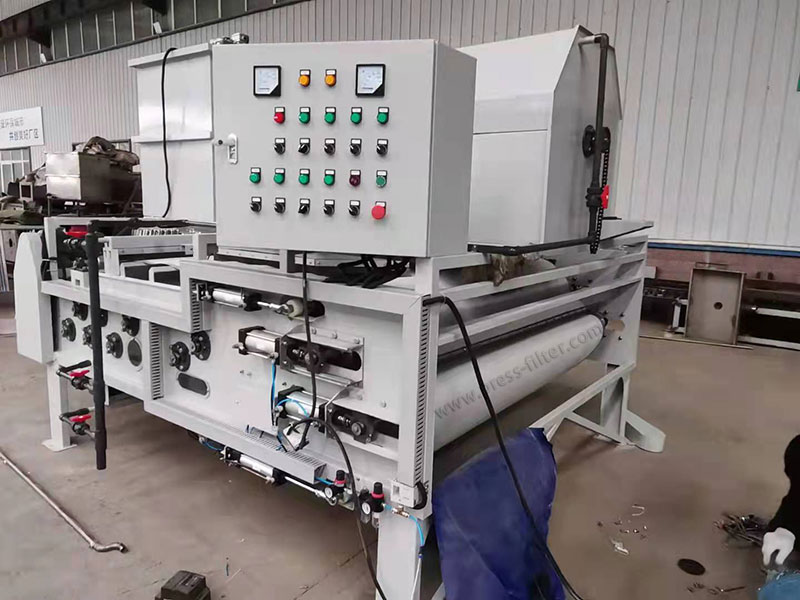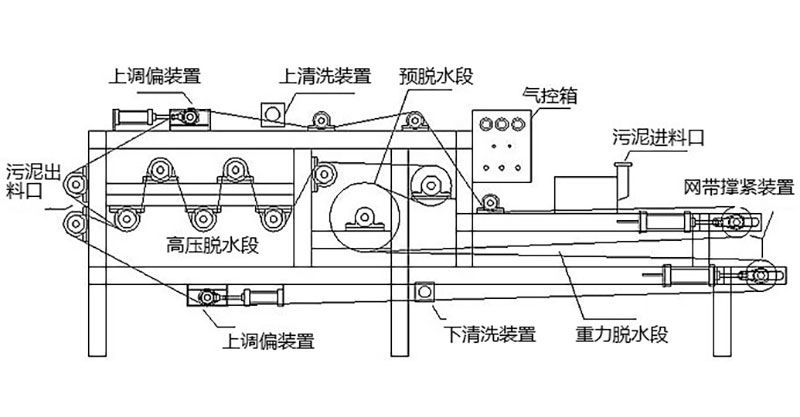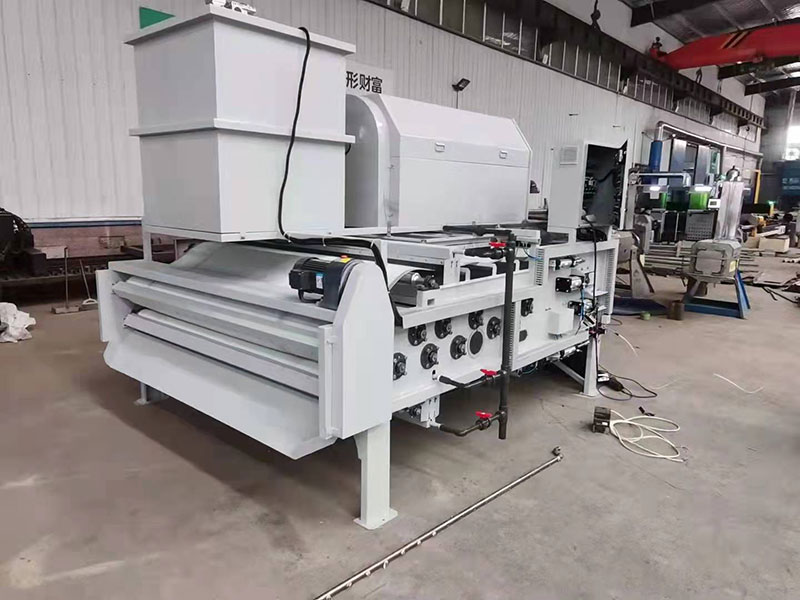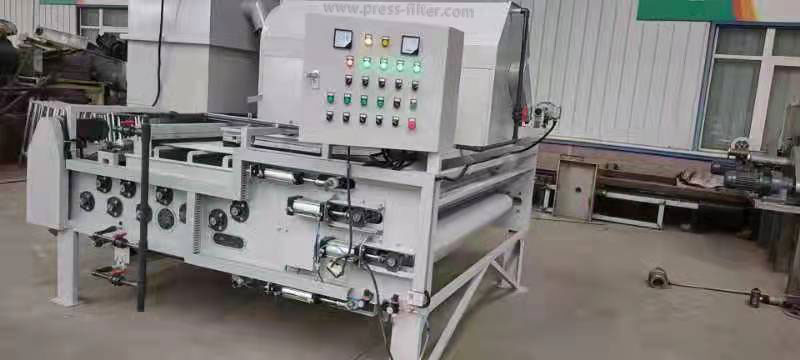5 Common Faults and Solutions of Belt Filter
The belt filter is a high-efficiency solid-liquid separation equipment composed of a combination of chemical flocculation and mechanical extrusion principles. After chemical conditioning, the sludge enters the filter belt, where it undergoes gravity concentration and dehydration-wedge zone dehydration-pressing dehydration. The sludge moisture gradually reduces to form a filter cake, which is unloaded through a scraper; the upper and lower filter belts are rinsed and reused for the next cycle of filtration.
There will be many problems during the use of the belt filter press. The following will introduce the solutions to five kinds of common faults of belt filter press.

Belt Filter Press Diagram
The belt filter press is mainly composed of a filter belt, a roller cylinder, a tensioning device, an offset adjustment device, a flushing device and a driving device, as shown in the figure below.
5 Common Belt Filter Breakdowns with Solutions
Discount for Filter Belt Deviation
Reason: The correction roller is not sensitive, the roller is in the wrong position or is partially worn or the mud is unevenly distributed.
Solution:
- If the air pipe or air bag is damaged, it should be replaced in time; the correction slider is rusted and stuck and needs to be rusted and lubricated; the correction air valve is faulty, or the correction angle is not adjusted correctly and needs to be repaired.
- Ensure that the installation of the rollers is balanced, and regularly maintain and inspect the bearings and rollers. Inspect the distribution of sludge on the filter cloth.
- In cases of severe unbalanced load, clean the sludge inlet distribution facilities, adjust the flat mud plate’s position, and replace the mud scraper if needed.
Filter Belt is Dirty
Reason: The flushing water pressure is low, or the flocculant ratio or dosage is inappropriate.
Solution:
- Inspect the flushing water pipeline for any leaks and verify the operational status of the flushing water pump. Continuously monitor the pressure intensity of the flushing water and promptly clean the filter should any clogging be detected.
- Adjust the proportion and dosage of the agent; extend the stirring time of the flocculant to fully dissolve the solvent and avoid residual floc from clogging the pores of the filter cloth.
Filter Belt Running out of Mud
Reason: The concentration of incoming mud is low, the flocculation effect of sludge is not ideal, the filter belt is arched, or the air pressure is too high.
Solution:
- Discontinue aeration and maximize the duration for sludge concentration.
- Based on the sludge’s flocculation state and the moisture content of the mud cake, add a suitable quantity of PAM solution.
- Inspect the functioning of rollers near the arching point and perform maintenance on the bearings. Examine the tensioning system of the arched filter belt to lessen the resistance from the tensioning guide rod and modify the tensioning air pressure to maintain an appropriate level of tension in both filter belts.
- Ensure that the air pressure is adjusted to a suitable range.
Filter Belt Slipping
Reasons: Overload of mud inlet, insufficient tension of the filter belt, flocculant stuck on the surface of the driving roller, wear of each supporting roller, or inflexible squeezing and rolling.
Solution:
Reduce the quantity of mud entering; verify if the tensioning pressure of the filter belt is suitable and make necessary adjustments; enhance the lubrication of bearings and gears.
Dehydrated Cement Cake has Low Solid Content
Reason: The dosage or type of flocculant is not suitable, the belt speed is too fast, the filter belt tension is too small, or the filter belt is clogged.
Solution:
- Conduct experiments to select the optimal type or dosage of flocculant.
- Turn down the belt speed.
- Adjust the tension of the filter belt suitably, typically setting the pressure of the belt filter press to 0.5-0.6MPa.
- If necessary, stop the machine immediately, clear the sludge from the filter belt before resuming operation, or consider replacing the filter belt.
6 Maintenance Measures of Belt Filter
- If the electrical control system fails, first cut off the power supply and shut down the machine for repair or replace components. Regularly measure the insulation performance of electrical appliances.
- Keep the machine and surrounding environment clean. Remove residual filtrate and filter cake from the machine promptly. The piston rod is regularly greased.
- Check whether the fasteners are loose.
- After stopping, clean the dirt on the conveyor and turn off the power.
- Lubricate the bearings, chains, sprockets, gears, and racks regularly, and add lubricant to the lubricator of the pneumatic system in a timely manner to ensure adequate lubrication of the pneumatic components.
- Carry out appropriate inspections before each use to avoid damage to the belt filter press.
Conclusion
In a word, when dealing with horizontal belt filter troubleshooting, it’s essential to know the key aspects of how to check the vacuum belt and understand the working principle of a belt filter press. The above explains 5 common faults and solutions of belt filter press. Hope this helps you solve your problem.




